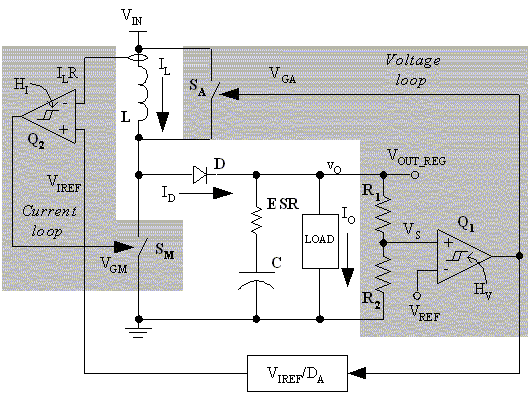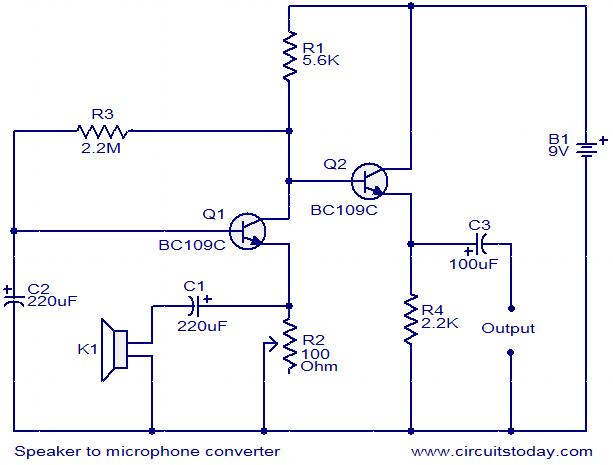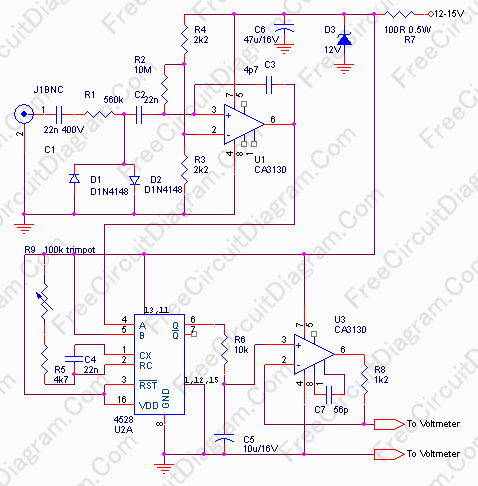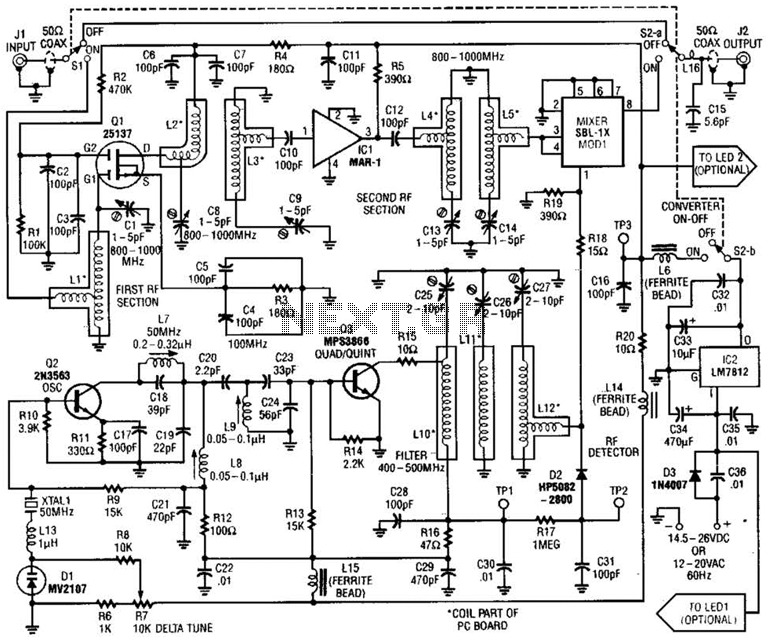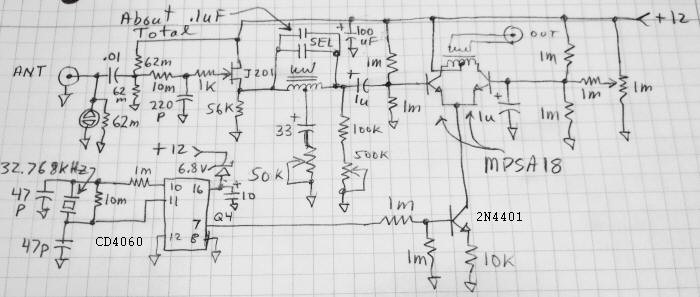
symmetric 12v to 5v converter

Symmetric 12V to 5V converter power supply. Refer to the designated page for an explanation regarding the associated circuit diagram.
The symmetric 12V to 5V converter power supply is designed to efficiently step down a 12V input voltage to a regulated 5V output. This type of converter is often utilized in various electronic applications where a stable 5V power supply is required, such as powering microcontrollers, sensors, and other low-voltage devices.
The circuit typically employs a linear voltage regulator or a switching regulator topology. A linear regulator, such as the LM7805, can be used for this purpose, providing a simple solution with minimal components. It consists of an input capacitor to filter the input voltage, the regulator itself, and an output capacitor to stabilize the output voltage. The linear regulator is straightforward to implement but may generate significant heat, especially when the difference between the input and output voltages is large.
Alternatively, a switching regulator, such as a buck converter, can be employed for higher efficiency. This type of converter works by rapidly switching the input voltage on and off, using an inductor and a diode to store and release energy, resulting in a lower average voltage at the output. The switching regulator is more complex, requiring additional components such as an inductor, a capacitor, and a control circuit, but it operates with higher efficiency and generates less heat, making it suitable for applications with higher current demands.
In both configurations, it is essential to include input and output capacitors to ensure stability and reduce voltage ripple. The design should also account for load variations and transient responses to maintain a consistent output voltage under different operating conditions.
Overall, the symmetric 12V to 5V converter power supply is a critical component in many electronic systems, enabling the reliable operation of devices that require a lower voltage supply. Proper design and component selection will ensure optimal performance and longevity of the power supply circuit.Symmetric 12V to 5V converter power supply. Go to that page to read the explanation about above power supply related circuit diagram. 🔗 External reference
The symmetric 12V to 5V converter power supply is designed to efficiently step down a 12V input voltage to a regulated 5V output. This type of converter is often utilized in various electronic applications where a stable 5V power supply is required, such as powering microcontrollers, sensors, and other low-voltage devices.
The circuit typically employs a linear voltage regulator or a switching regulator topology. A linear regulator, such as the LM7805, can be used for this purpose, providing a simple solution with minimal components. It consists of an input capacitor to filter the input voltage, the regulator itself, and an output capacitor to stabilize the output voltage. The linear regulator is straightforward to implement but may generate significant heat, especially when the difference between the input and output voltages is large.
Alternatively, a switching regulator, such as a buck converter, can be employed for higher efficiency. This type of converter works by rapidly switching the input voltage on and off, using an inductor and a diode to store and release energy, resulting in a lower average voltage at the output. The switching regulator is more complex, requiring additional components such as an inductor, a capacitor, and a control circuit, but it operates with higher efficiency and generates less heat, making it suitable for applications with higher current demands.
In both configurations, it is essential to include input and output capacitors to ensure stability and reduce voltage ripple. The design should also account for load variations and transient responses to maintain a consistent output voltage under different operating conditions.
Overall, the symmetric 12V to 5V converter power supply is a critical component in many electronic systems, enabling the reliable operation of devices that require a lower voltage supply. Proper design and component selection will ensure optimal performance and longevity of the power supply circuit.Symmetric 12V to 5V converter power supply. Go to that page to read the explanation about above power supply related circuit diagram. 🔗 External reference
